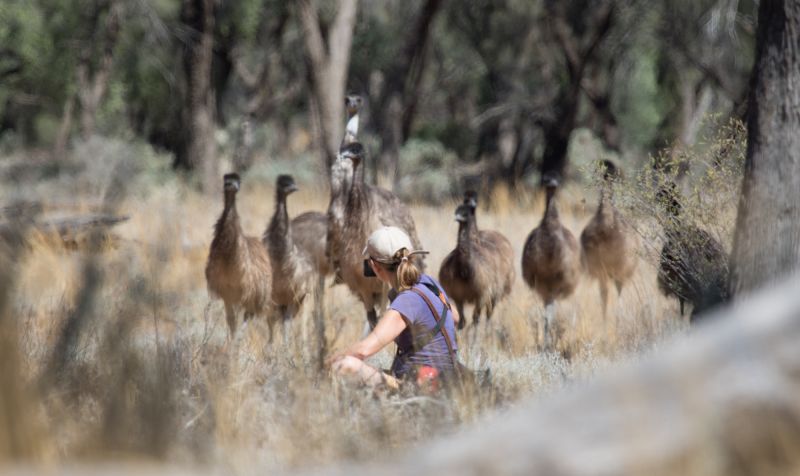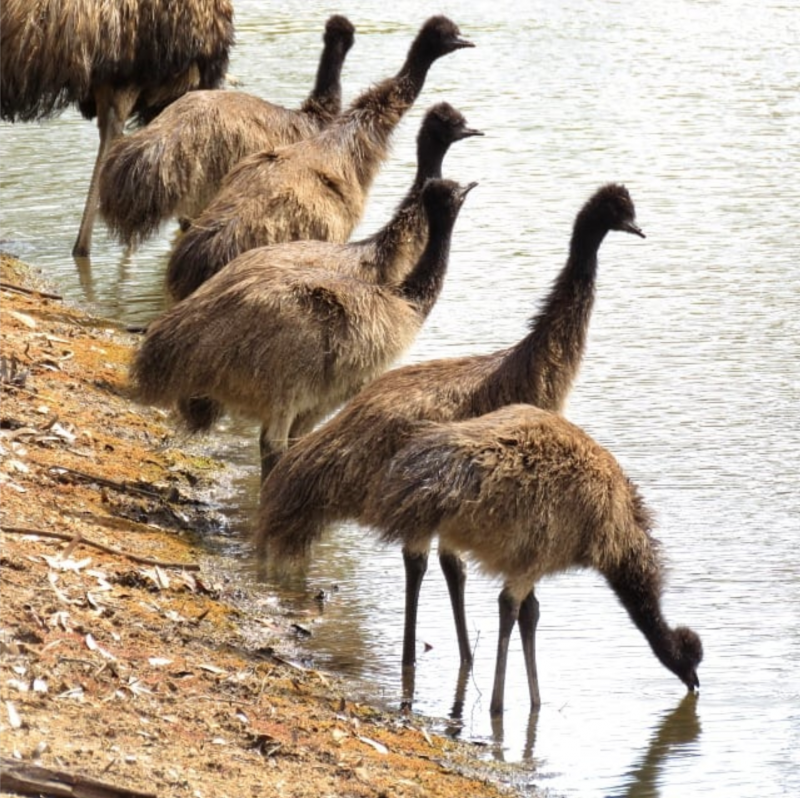When you ask Roger Smith, co-founder of Echidna Walkabout Nature Tours along with Janine Duffy, about climate change at Mungo National Park, he cites an example. “To help people understand the impacts of climate change in a certain area, I usually profile a creature,” he says. “I’ve been visiting Mungo for over five decades and have noticed the number of emus over the last few years has declined.”
 Roger has noticed the number of Emus at Mungo National Park has declined over the past few years. Image: Echidna Walkabout Nature Tours
Roger has noticed the number of Emus at Mungo National Park has declined over the past few years. Image: Echidna Walkabout Nature Tours
Mungo National Park was recognised and included in the Willandra Lakes World Heritage Region in 1981 for its record of Aboriginal settlement (experts hypothesise that the park is home to the oldest culture on earth after the discovery of Mungo Lady and Mungo Man), its strong representation of Australian megafauna, and its important geological attributes.
The park – which spans 111,000 hectares – is also famous for its diverse bird life. “Many serious birdwatchers come here to see the 150 or so species of birds we have here,” Roger says. “The Pink Cockatoo, Chestnut-crowned Babbler and a staggering diversity of parrots are all highlights.”

Pink Cockatoos are one of 150+ species of birds in the region. Image: Echidna Walkabout Nature Tours
Emus, are one of the more popular birds to spot, however, in April 2021 Roger saw only eight emus over three days. “A few years ago, at the same time of the year, I’d usually see hundreds,” he says. “One of the most important things we do when we assess the impacts of climate change is to monitor the health of the environment, and one of the best ways to do this is to track and record the number of creatures we see.”
Although the majority of the emus seemed to have moved on to ‘greener pastures’ for now, Roger is confident that they will return (probably in reduced numbers), explaining that animals naturally move between areas to survive different booms and busts. “Australian wildlife is capable of dealing with dramatic changes in the environment,” he explains.
 Emus drinking at a waterhole at Mungo National Park. Image: Echidna Walkabout Nature Tours
Emus drinking at a waterhole at Mungo National Park. Image: Echidna Walkabout Nature Tours
In the meantime, spotting an emu feels just that little bit more special when in Mungo, and Roger says that by coming along on the Mungo Outback Journey, guests are already partaking in important conservational work. “By walking around, looking for seeds, looking for wildlife, and logging the species that we see, guests are already doing a great deal,” he says. “However, for Mungo to lose so many of its emus is extraordinary, and a warning that even Australia’s toughest bird is having problems with climate change."
Mungo Outback Journey (4 days/ 3 nights)
Be captivated by the expansive red sand plains and dunes, riverine ecosystems of the famous Murray and Darling Rivers and the arid land ecosystems around Lake Mungo.

